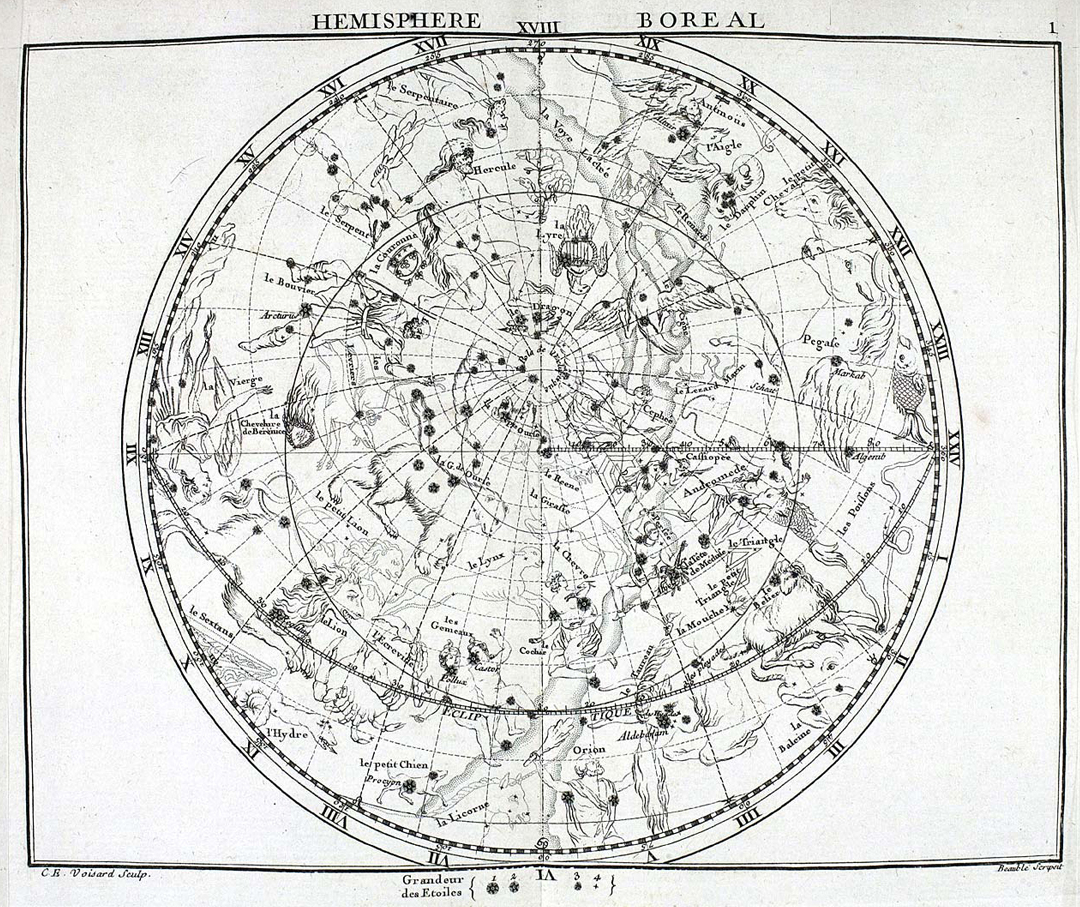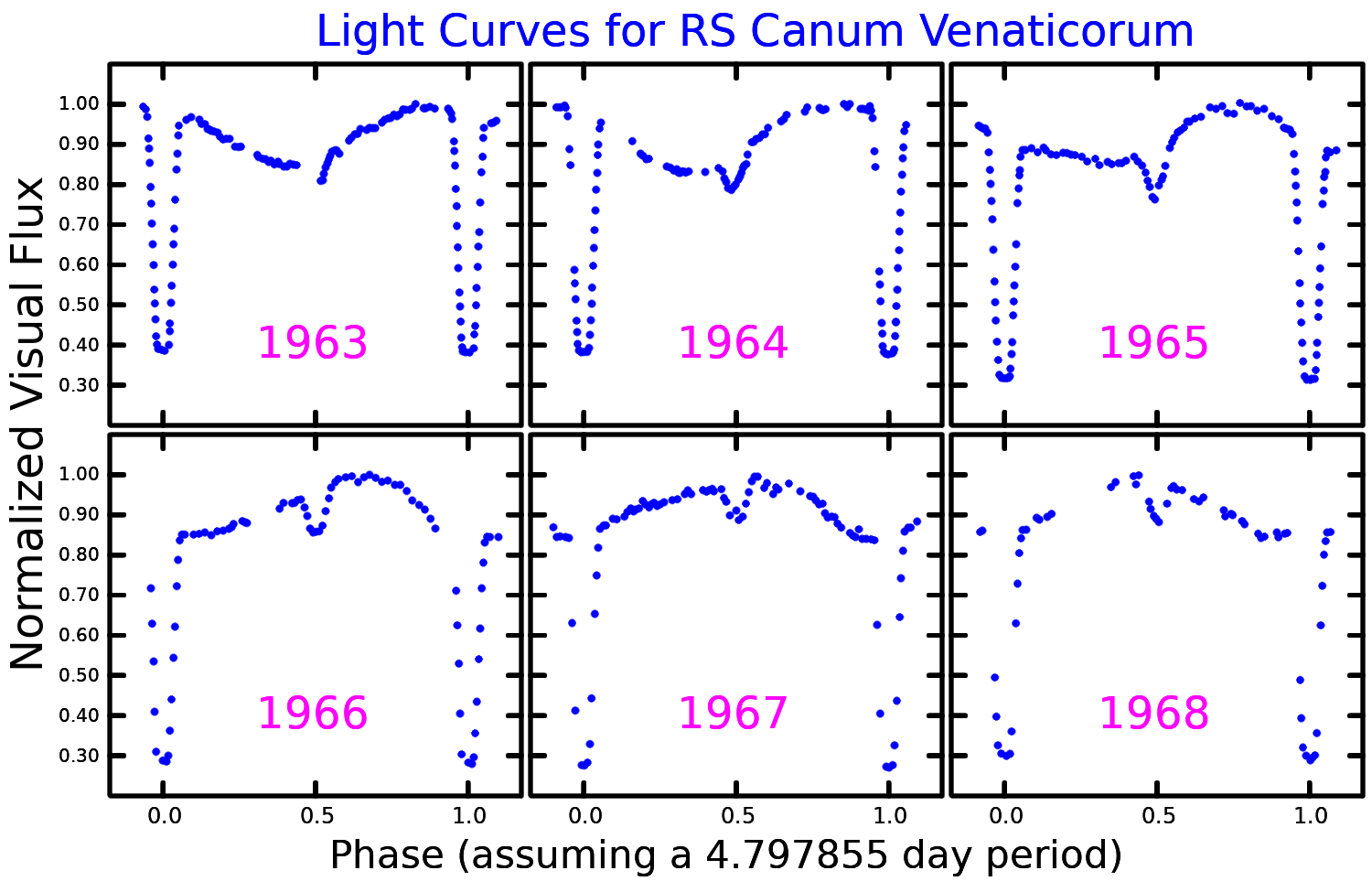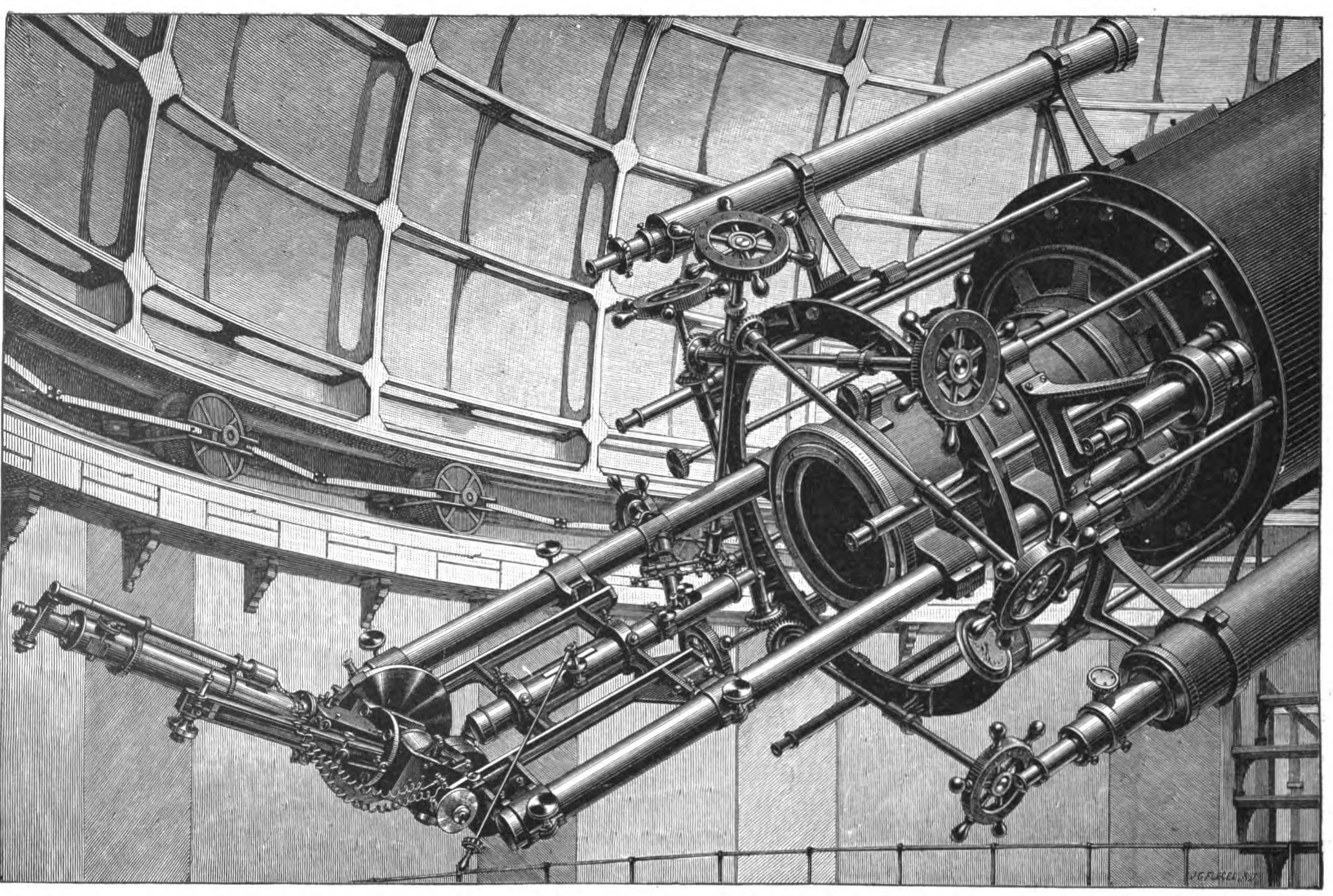|
Rho Boötis
Rho Boötis, Latinised from ρ Boötis, is a single, orange-hued star in the northern constellation of Boötes. It is visible to the naked eye with an apparent visual magnitude of 3.59. Based upon parallax measurements, it is located at a distance of approximately from Earth. It is moving toward the Sun with a radial velocity of −13.6 km/s. There is an optical companion, a magnitude 11.5 star, located 34.7 arcseconds away along a position angle of 345° (as of 2013). This is an evolved K-type giant star, currently on the red-giant branch, with a stellar classification of K4 III and an estimated age of 10 billion years. Since 1943, the spectrum of this star has served as one of the stable anchor points by which other stars are classified. It has around 1.2 times the mass of the Sun and has expanded to 22 times the Sun's girth. The star is radiating 132 times the Sun's luminosity from its enlarged photosphere at an effective temperature of about . Rho Boötis is ... [...More Info...] [...Related Items...] OR: [Wikipedia] [Google] [Baidu] |
Boötes IAU
Boötes ( ) is a constellation in the northern sky, located between 0° and +60° declination, and 13 and 16 hours of right ascension on the celestial sphere. The name comes from la, Boōtēs, which comes from grc-gre, Βοώτης, Boṓtēs ' herdsman' or 'plowman' (literally, ' ox-driver'; from ''boûs'' 'cow'). One of the 48 constellations described by the 2nd-century astronomer Ptolemy, Boötes is now one of the 88 modern constellations. It contains the fourth-brightest star in the night sky, the orange giant Arcturus. Epsilon Boötis, or Izar, is a colourful multiple star popular with amateur astronomers. Boötes is home to many other bright stars, including eight above the fourth magnitude and an additional 21 above the fifth magnitude, making a total of 29 stars easily visible to the naked eye. History and mythology In ancient Babylon, the stars of Boötes were known as SHU.PA. They were apparently depicted as the god Enlil, who was the leader of the Babylonian ... [...More Info...] [...Related Items...] OR: [Wikipedia] [Google] [Baidu] |
K-type Star
In astronomy, stellar classification is the classification of stars based on their spectral characteristics. Electromagnetic radiation from the star is analyzed by splitting it with a prism or diffraction grating into a spectrum exhibiting the rainbow of colors interspersed with spectral lines. Each line indicates a particular chemical element or molecule, with the line strength indicating the abundance of that element. The strengths of the different spectral lines vary mainly due to the temperature of the photosphere, although in some cases there are true abundance differences. The ''spectral class'' of a star is a short code primarily summarizing the ionization state, giving an objective measure of the photosphere's temperature. Most stars are currently classified under the Morgan–Keenan (MK) system using the letters ''O'', ''B'', ''A'', ''F'', ''G'', ''K'', and ''M'', a sequence from the hottest (''O'' type) to the coolest (''M'' type). Each letter class is then subdivi ... [...More Info...] [...Related Items...] OR: [Wikipedia] [Google] [Baidu] |
Durchmusterung
In astronomy, Durchmusterung or Bonner Durchmusterung (BD) is an astrometric star catalogue of the whole sky, compiled by the Bonn Observatory in Germany from 1859 to 1903. The name comes from ('run-through examination'), a German word used for a systematic survey of objects or data. The term has sometimes been used for other astronomical surveys, including not only stars, but also the search for other celestial objects. Special tasks include celestial scanning in electromagnetic wavelengths shorter or longer than visible light waves. Original catalog The 44 years of work on the Bonner Durchmusterung (abbreviated BD), initiated by Friedrich Argelander and largely carried out by his assistants, resulted in a catalogue of the positions and apparent magnitudes of approximately 325,000 stars to apparent magnitude 9–10. The catalogue was accompanied by charts plotting the positions of the stars, and was the basis for the ''Astronomische Gesellschaft Katalog'' (AGK) and ''Smithsonia ... [...More Info...] [...Related Items...] OR: [Wikipedia] [Google] [Baidu] |
Flamsteed Designation
A Flamsteed designation is a combination of a number and constellation name that uniquely identifies most naked eye stars in the modern constellations visible from southern England. They are named for John Flamsteed who first used them while compiling his '' Historia Coelestis Britannica''. (Flamsteed used a telescope, and the catalog also includes some stars which are relatively bright but not necessarily visible with the naked eye.) Description Flamsteed designations for stars are similar to Bayer designations, except that they use numbers instead of Greek and Roman letters. Each star is assigned a number and the Latin genitive of the constellation it lies in (see 88 modern constellations for a list of constellations and the genitive forms of their names). Flamsteed designations were assigned to 2554 stars. The numbers were originally assigned in order of increasing right ascension within each constellation, but due to the effects of precession they are now slightly out o ... [...More Info...] [...Related Items...] OR: [Wikipedia] [Google] [Baidu] |
Bayer Designation
A Bayer designation is a stellar designation in which a specific star is identified by a Greek or Latin letter followed by the genitive form of its parent constellation's Latin name. The original list of Bayer designations contained 1,564 stars. The brighter stars were assigned their first systematic names by the German astronomer Johann Bayer in 1603, in his star atlas '' Uranometria''. Bayer catalogued only a few stars too far south to be seen from Germany, but later astronomers (including Nicolas-Louis de Lacaille and Benjamin Apthorp Gould) supplemented Bayer's catalog with entries for southern constellations. Scheme Bayer assigned a lowercase Greek letter (alpha (α), beta (β), gamma (γ), etc.) or a Latin letter (A, b, c, etc.) to each star he catalogued, combined with the Latin name of the star's parent constellation in genitive (possessive) form. The constellation name is frequently abbreviated to a standard three-letter form. For example, Aldebaran in the constellation ... [...More Info...] [...Related Items...] OR: [Wikipedia] [Google] [Baidu] |
RS Canum Venaticorum Variable
An RS Canum Venaticorum variable is a type of variable star. The variable type consists of close binary stars having active chromospheres which can cause large stellar spots. These spots are believed to cause variations in their observed luminosity. Systems can exhibit variations on timescales of years due to variation in the spot surface coverage fraction, as well as periodic variations which are, in general, close to the orbital period of the binary system. Some systems exhibit variations in luminosity due to their being eclipsing binaries. Typical brightness fluctuation is around 0.2 magnitudes. They take their name from the star RS Canum Venaticorum (abbreviated RS CVn). Otto Struve (1946) first called attention to the group, but it was Oliver (1974) who was the first to formally propose a set of observational characteristics to define the RS CVn criteria. The working definition, as it is used today, was that set down by Hall (1976). Berdyuginabr>2.4 RS CVn stars/ref> The ... [...More Info...] [...Related Items...] OR: [Wikipedia] [Google] [Baidu] |
Effective Temperature
The effective temperature of a body such as a star or planet is the temperature of a black body that would emit the same total amount of electromagnetic radiation. Effective temperature is often used as an estimate of a body's surface temperature when the body's emissivity curve (as a function of wavelength) is not known. When the star's or planet's net emissivity in the relevant wavelength band is less than unity (less than that of a black body), the actual temperature of the body will be higher than the effective temperature. The net emissivity may be low due to surface or atmospheric properties, including greenhouse effect. Star The effective temperature of a star is the temperature of a black body with the same luminosity per ''surface area'' () as the star and is defined according to the Stefan–Boltzmann law . Notice that the total ( bolometric) luminosity of a star is then , where is the stellar radius. The definition of the stellar radius is obviously not stra ... [...More Info...] [...Related Items...] OR: [Wikipedia] [Google] [Baidu] |
Photosphere
The photosphere is a star's outer shell from which light is radiated. The term itself is derived from Ancient Greek roots, φῶς, φωτός/''phos, photos'' meaning "light" and σφαῖρα/''sphaira'' meaning "sphere", in reference to it being a spherical surface that is perceived to emit light. It extends into a star's surface until the plasma becomes opaque, equivalent to an optical depth of approximately , or equivalently, a depth from which 50% of light will escape without being scattered. A photosphere is the deepest region of a luminous object, usually a star, that is transparent to photons of certain wavelengths. Temperature The surface of a star is defined to have a temperature given by the effective temperature in the Stefan–Boltzmann law. Stars, except neutron stars, have no solid or liquid surface. Therefore, the photosphere is typically used to describe the Sun's or another star's visual surface. Composition of the Sun The Sun is composed primari ... [...More Info...] [...Related Items...] OR: [Wikipedia] [Google] [Baidu] |
Sun's Luminosity
The solar luminosity (), is a unit of radiant flux ( power emitted in the form of photons) conventionally used by astronomers to measure the luminosity of stars, galaxies and other celestial objects in terms of the output of the Sun. One nominal solar luminosity is defined by the International Astronomical Union to be . This does not include the solar neutrino luminosity, which would add , or , i.e. a total of (the mean energy of the solar photons is 26 MeV and that of the solar neutrinos 0.59 MeV, i.e. 2.27%; the Sun emits photons and as many neutrinos each second, of which per m2 reach the Earth each second). The Sun is a weakly variable star, and its actual luminosity therefore fluctuates. The major fluctuation is the eleven-year solar cycle (sunspot cycle) that causes a quasi-periodic variation of about ±0.1%. Other variations over the last 200–300 years are thought to be much smaller than this. Determination Solar luminosity is related to solar irradiance (the ... [...More Info...] [...Related Items...] OR: [Wikipedia] [Google] [Baidu] |
Mass Of The Sun
The solar mass () is a standard unit of mass in astronomy, equal to approximately . It is often used to indicate the masses of other stars, as well as stellar clusters, nebulae, galaxies and black holes. It is approximately equal to the mass of the Sun. This equates to about two nonillion ( short scale), two quintillion (long scale) kilograms or 2000 quettagrams: The solar mass is about times the mass of Earth (), or times the mass of Jupiter (). History of measurement The value of the gravitational constant was first derived from measurements that were made by Henry Cavendish in 1798 with a torsion balance. The value he obtained differs by only 1% from the modern value, but was not as precise. The diurnal parallax of the Sun was accurately measured during the transits of Venus in 1761 and 1769, yielding a value of (9 arcseconds, compared to the present value of ). From the value of the diurnal parallax, one can determine the distance to the Sun from the geometry ... [...More Info...] [...Related Items...] OR: [Wikipedia] [Google] [Baidu] |
Stellar Spectrum
Astronomical spectroscopy is the study of astronomy using the techniques of spectroscopy to measure the spectrum of electromagnetic radiation, including visible light, ultraviolet, X-ray, infrared and radio waves that radiate from stars and other celestial objects. A stellar spectrum can reveal many properties of stars, such as their chemical composition, temperature, density, mass, distance and luminosity. Spectroscopy can show the velocity of motion towards or away from the observer by measuring the Doppler shift. Spectroscopy is also used to study the physical properties of many other types of celestial objects such as planets, nebulae, galaxies, and active galactic nuclei. Background Astronomical spectroscopy is used to measure three major bands of radiation in the electromagnetic spectrum: visible light, radio waves, and X-rays. While all spectroscopy looks at specific bands of the spectrum, different methods are required to acquire the signal depending on the frequency. ... [...More Info...] [...Related Items...] OR: [Wikipedia] [Google] [Baidu] |






